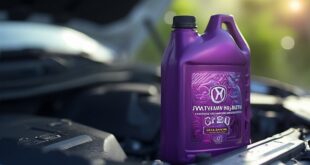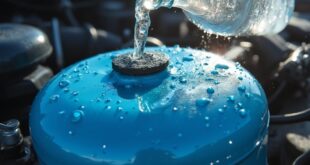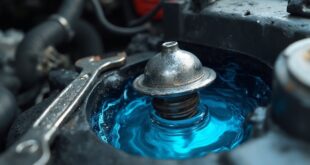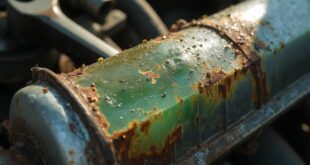If your car won't jump start, first check for common issues like corroded battery terminals or faulty connections. Look for signs of a weak battery, such as dimming lights or clicking sounds. Make certain you're using good quality jumper cables and follow the proper jump-starting procedure. If you still can't get it started, there might be problems with the starter or neutral safety switch. There's more to explore about diagnosing these issues and keeping your vehicle in top shape.
Common Reasons Your Car Won't Start
When your car won't start, it can be frustrating, especially if you're in a hurry. A bad connection, often due to corrosion on battery terminals, can block power flow.
If you're using thin or cheap jumper cables, they mightn't deliver enough charge. A dead battery, with a defective cell, may also prevent your engine from cranking.
Additionally, a malfunctioning starter might produce a clicking sound but fail to start the engine.
Finally, a faulty neutral safety switch can stop your car from starting unless it's in Park or Neutral.
Identifying the issue is key to getting back on the road.
Signs of a Weak or Dead Battery
A weak or dead battery often reveals itself through several telltale signs that can save you from unexpected breakdowns.
You might notice dimming headlights or interior lights, which often indicate insufficient power. If your car struggles to start or takes longer than usual, that's another warning sign.
You may also hear a clicking sound when you turn the key, suggesting the battery lacks the necessary charge.
Finally, if your dashboard warning lights flicker or fail to illuminate, it's time to investigate further.
Recognizing these symptoms early can help you avoid being stranded with a non-functional vehicle.
Troubleshooting Jump Start Issues
If your jump start attempt isn't successful, it's important to troubleshoot the problem methodically.
First, check your jumper cables and connections for corrosion or warmth, which indicates resistance. Clean the battery terminals if needed. Allow the battery to recharge by keeping the cables connected for several minutes.
Next, shift into Neutral to test the Neutral Safety Switch. If the engine still won't crank, consider the possibility of a malfunctioning starter or a dead battery.
If these steps don't work, it's time to seek help from a professional mechanic for further diagnostics and repairs.
Proper Jump Starting Procedure
After troubleshooting any jump-start issues, it's time to follow the proper jump-starting procedure to get your car running.
Position the vehicles close together, with hoods facing each other. Attach the red clamps to the positive terminals and black clamps to the negative terminals, avoiding sparks.
Start the working car first, then the dead one. If it doesn't start immediately, give it a few minutes to charge.
Once started, remove the cables in reverse order. Keep the engine running for at least 15 minutes to recharge the battery effectively before shutting it off.
Safe and efficient jump-starting is essential!
Diagnosing Battery and Alternator Problems
When diagnosing battery and alternator problems, understanding the symptoms can save you time and money. Pay attention to signs like dimming headlights or extended start times, which often indicate battery issues. If your car starts but dies after removing jumper cables, the alternator might be the culprit.
| Symptoms | Possible Issues |
|---|---|
| Dimming headlights | Weak battery |
| Clicking sound | Faulty starter |
| Car starts, then dies | Failing alternator |
| Slow cranking | Drained or bad battery |
Testing at an auto shop can confirm what's wrong.
Safety Best Practices for Jump Starting
Understanding battery and alternator issues is important, but safety should always be your top priority while jump-starting a car.
Always consult your owner's manual for specific jump-starting instructions. Before connecting cables, verify both vehicles are turned off to prevent electrical damage.
Wear protective gear to shield against potential sparks or acid leaks. Connect the red clamp to the positive terminal on both batteries first, then the black clamp to the negative terminal on the dead battery.
Remove cables in reverse order, and never let the clamps touch each other. Following these practices can help keep you safe during the process.
Environmental Factors Affecting Battery Performance
While you may not think about it often, environmental factors can greatly impact your car battery's performance. Cold weather can sap battery power, making it harder to start your vehicle. If temperatures drop below freezing, your battery's capacity can decrease considerably.
Conversely, extreme heat can also harm battery life by increasing evaporation of the electrolyte. High humidity can lead to corrosion, affecting connections.
Additionally, frequent short trips can prevent your battery from fully recharging, especially in adverse conditions. Understanding these factors helps you take precautions and keep your battery in top shape, ensuring reliable starts year-round.
Preventative Maintenance for Your Vehicle
To keep your vehicle running smoothly and reliably, regular preventative maintenance is essential.
By staying proactive, you can avoid issues that lead to jump-start problems. Here are three key maintenance tasks you shouldn't overlook:
- Battery Inspection: Check for corrosion and guarantee terminals are clean and tight.
- Fluid Levels: Regularly check and top off engine oil, coolant, and brake fluid to keep systems functioning properly.
- Tire Maintenance: Rotate tires and maintain proper pressure to enhance handling and fuel efficiency.
Frequently Asked Questions
Can I Jump Start a Hybrid or Electric Vehicle?
You can jump start a hybrid or electric vehicle, but it's essential to follow the manufacturer's guidelines. Using improper methods might damage the battery or electrical systems, so consult your owner's manual first.
How Long Should I Wait Before Attempting to Jump Start Again?
You should wait about five to ten minutes before attempting to jump start again. This allows the weak battery to recover slightly, increasing your chances of a successful start when you try again.
What Should I Do if My Car Clicks but Won't Start?
If your car clicks but won't start, check the battery connections for corrosion. If they're clean, the starter might be failing. Consider trying a jump or getting a mechanic to diagnose the issue.
Can Extreme Temperatures Affect Jump Starting Success?
Extreme temperatures can definitely affect jump starting success. Cold weather can drain batteries, while excessive heat may cause them to fail. Always check battery health and connections before attempting to jump start in extreme conditions.
Is It Safe to Jump Start a Car With a Damaged Battery?
Jump-starting a car with a damaged battery isn't safe. It can cause further damage or even lead to sparks and explosions. Always assess the battery's condition before attempting to jump-start to guarantee safety.
 Car Service Land Coupons for Oil change, Tires, Wheel alignment, Brakes, Maintenance
Car Service Land Coupons for Oil change, Tires, Wheel alignment, Brakes, Maintenance




